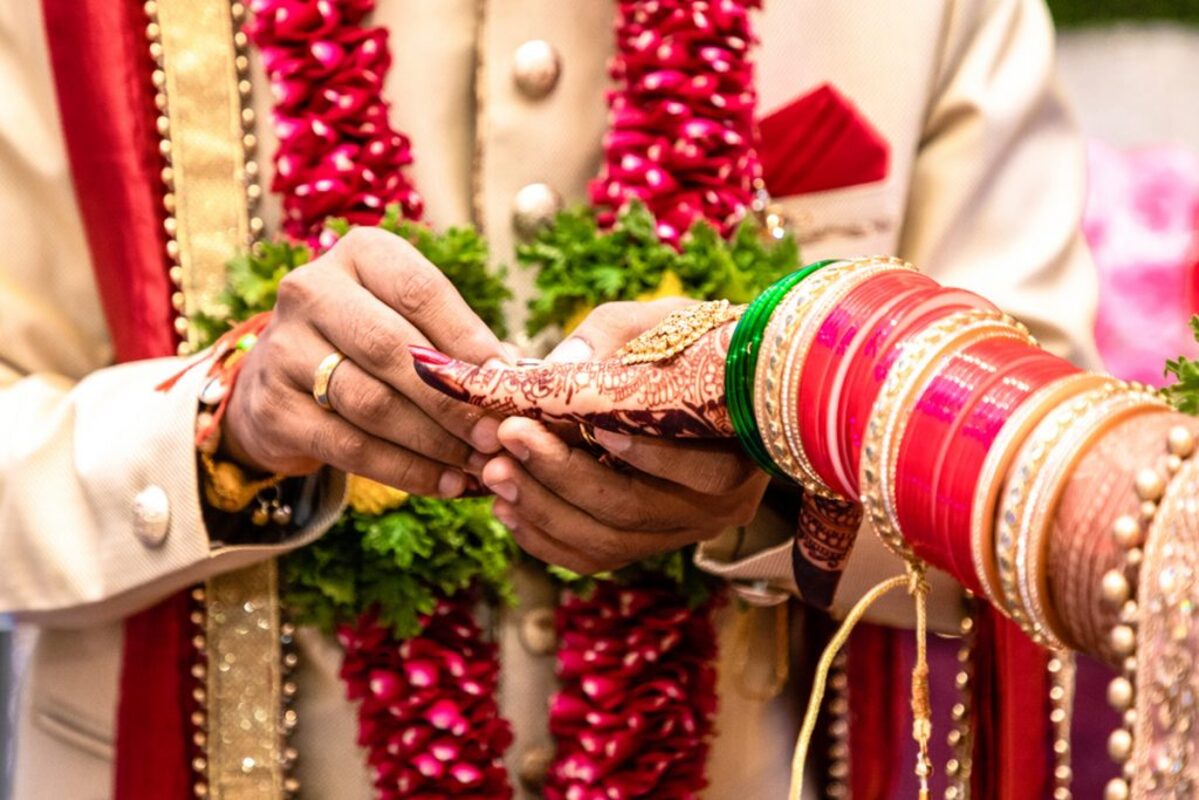Social media, most will not be surprised to hear, has colonised the world of marriages and betrothals. Such is the invasion that matters are now at a point where instead of images of brides and grooms and family members appearing on the various social media platforms, the events are increasingly produced for just such dissemination.
Advertisement
To begin with, South Asian weddings, with their rituals and rites and multi-day celebrations, are particularly amenable to image-making. Long before any kind of social media ever came around, weddings involved a ‘stage’ where the bride and groom would be seated, with a captive audience of relatives watching with avid attention. The arrival of the groom and then the bride with their accompanying theatrics supplied good sub-plots. All of it, even when it could not be shared and commented on, contained all the ingredients of drama. In our time, television producers were the first to realise that weddings make good content so that fake weddings hosted on various morning shows and involving usually fake couples command huge ratings.
The ‘Insta-shaadi’, however, is not a television phenomenon. It refers to wedding events and activities that are no longer meaningful in themselves but only in their representative or shareable forms. One example is the photo booth, a fixture of Insta-weddings, that is no longer a booth but a funny or cute or decadent background against which attendees can take pictures. The background may have the initials of the bride and groom and a hashtag of their choosing. It is meaningless in terms of the central action of the shaadi but essential to making the wedding go viral.
Two or three wild and crazy photo booths ensure that many hundreds of relatives and friends can disseminate images of the wedding across social media platforms. All of this enables a private event, a particular wedding of a particular bride and groom, to become the object of public consumption, a form of accidental art that is available to everyone with access to the internet. Insta-weddings are ones where scripts are being intentionally written, stagecraft being considered with care and execution and production accomplished with a fervent zeal for perfection.
In our particular societal moment, where the boundaries between the real and virtual are being blurred every day, weddings can present particular problems. Beyond the obsession with taking pictures and selfies, there is also the matter of whether ritual and contract are actual or mere copies. I have seen this issue come up with some frequency where unconventional weddings are concerned.
For instance, if the groom is already married, the new relationship becomes inherently suspect. Photos of the nikah proliferate on the internet to try and legitimise a relationship that was otherwise considered unreal. A small clip of the offer and acceptance that is vital to the nikah can, in such a case, go a long way to silence detractors even if they are only family members. The actual event in this sense happens at least in some part so that Tik Tok can be produced, posted and shared as incontrovertible proof.
The project of making a wedding Instagram-friendly can be taken to its farthest limit as can be seen in places like South Korea. Individual brides and grooms there have completely given themselves over to the idea that it is the content created that is important. So pre-staged scenes exist that require only the insertion of the bride and groom, with each setting suggesting a separate event that never happened but whose pictures are nevertheless available. There is logic for the creation of such venues: the flowers on the stage, the exorbitant costumes for the bride and groom and their immediate families are all very real and of high quality. Who would know that they were part of an orchestrated tableau when the wedding itself is an orchestrated tableau?
Imported to Pakistan, the Insta-friendly shaadihouse could look something like this. A large and imposing mansion could be set up with scenes of incredible decadence in its various rooms. Bride and groom and close relatives and friends could all dress up in yellow for the mayun ‘experience’. Then they could move on to ‘mehndi’ with its own costumes and rituals and then to the baraat complete with a full band and horses and a fireworks display. Great content would be guaranteed at a fraction of the cost. If the lines between organic and real and virtual and true are to be blurred, then why not forget the messy business and cost of the actual event, and produce only the representations that are professionally generated and subtract the disagreements and annoyances of a real wedding?
Such an Insta-shaadi house may not yet exist but the market is undoubtedly present. Insta-houses which feature different rooms with interesting backdrops and lighting amenable to TikToks are already a reality and frequented by TikTok and Insta influencers. In this sense, the Insta-shaadi is simply a sign of the times, where bride and groom are quite aware that they are content. The consequence of course is that the public’s expectations must be met; a bride should cry at the rukhsati not only because she is actually sad, but because a TikTok of her teary farewell is essential as the final bit of the whole event. In the age of the Insta-shaadi, the wedding is now one long photoshoot and video production. If brides and grooms of the Insta age were told that all the content of their event had been wiped out, I would not be at all surprised if they chose to do it all over again. After all, if you did not see it on Instagram, it did not really happen.
Dawn/ANN.











